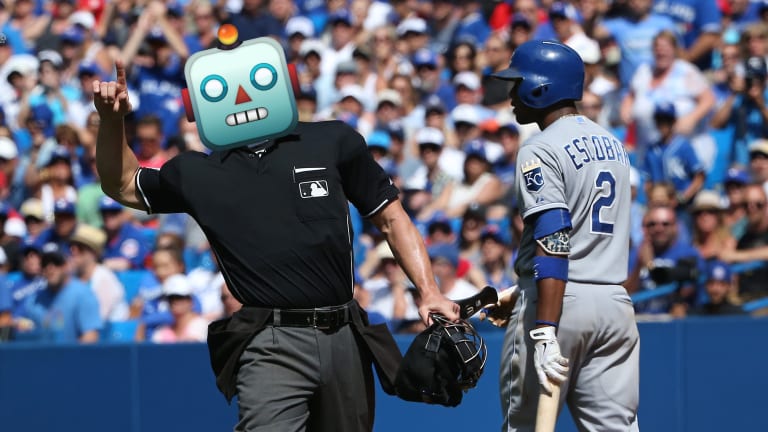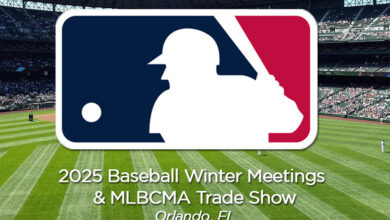
There’s no doubt that baseball traditionalists across America will recoil at the idea of technology being brought into the nation’s national pastime. Accepting change is hard enough, but when you’re talking about making alterations to a game that has been around since the 1800s, you’re no doubt going to encounter some strong opinions.
Here’s the thing, though, even a person who is the most averse to change will tell you that there’s no stopping it. What they won’t tell you is that it does sometimes make things better. Which is why the time has come to discuss the myth of the infallibility of an on-field umpire, whether baseball could well benefit for the help of a robot umpire, and how the initial running of the system has gone?
Experimenting in the Atlantic
The powers that be at Major League Baseball decided that they wanted to see a robot umpire in action, and asked the Atlantic League whether they wouldn’t mind having the experiment run during the playing of their season. To be honest, they probably told them that this would be happening but that is neither here nor there, the eight-team professional league would be the first to experience what it would be like.
Tired of inconsistent strike zones? Maybe it's time for robot umpires…#MLB // #HowWouldThatWork pic.twitter.com/slQDFuT2PM
— Stadium (@Stadium) June 1, 2019
Now, in essence, what a robot umpire does is assess whether the pitcher has thrown a ball or a strike. If the throw is deemed to be a ball, then the umpire on the field will have an automated message relayed to him telling him as much. What’s interesting is that the system allows for every batter’s size as well as their stance, which makes sure that a player measuring over two meters isn’t given the same strike zone as a player measuring just five feet.
Needless to say, thanks to the technological advances of TrackMan, the robot umpire system is incredibly sophisticated.
Was it a successful debut?
One of the teething issues, was the battery life of the latest Apple AirPods that the umpires were given. They kept running out which meant that the feed was stopped. Any jogger or gym-goer around the world could have told the MLB that this would be the case but, as far as problems go, it has to be said, that was quite minor.
And, as for a delay in the game’s proceedings, there wasn’t any given how quickly the assessment from the robot umpire was made. All in all, it was a successful debut; which suggests that robot umpires could be here to stay in the MLB.
Will robot umpires lessen the enjoyment of baseball?
That entirely depends on the person but, if we were to hop across the pond and have a look at the introduction of what is called the Video Assistant Referee, or VAR for short, in the main English soccer league, we may find some answers.
Michael Oliver – football pioneer! #VAR #FACup pic.twitter.com/eR5u4oTlDp
— BBC Sport (@BBCSport) January 5, 2020
To start with, Business Insider reckons that the English Premier League, on average, attracts 5000 more fans per game at the stadium than a fixture in the MLB. So, the induction of this system was a significant call.
At first, it only started with goal-line technology in 2013, which simply assessed whether the whole of the ball had crossed the goal line. Six years later, and it has morphed into VAR – which referees every aspect of the game. Now, the hierarchy of English soccer will tell you that it is there to correct what they have deemed ‘a clear and obvious error’, but speak to any fan in England about it and you will, more often than not, hear of a very present desire to get rid of it.
It is now beginning to decide matches on the strangest of calls which leads to determining who wins the game altogether, which changes the course of a tournament.
Could you imagine the use of technology for something so trivial had stopped the Washington Nationals winning the World Series last year? Their first win since 1924. History has shown that this is a once in a lifetime kind of event, even if Betway has priced the Nationals at odds of 12/1 as of the 8th of January, to make it back-to-back World Series. It is so unlikely to ever happen again, or at least anytime soon.
Could baseball look itself in the mirror if a team deserving of a famous World Series win was robbed due to a technicality of sorts? It seems that the intentions of technology are good, but the waters are murkier than ever before.
So, if you look back to the goal-line technology that was introduced in England during 2013, you can now suddenly see some significant similarities with what English soccer has already adopted, and what the future of baseball could look like in due course. The robot umpire makes a call that is either black or white, there is no room for interpretation. It is either over the line or not, it is either a ball or a strike. Fanatsic, leave it at that.
The message is that once you introduce technology into sport, it’s hard to stop it taking over the game in its entirety.
The rabbit hole of technology
Baseball has already dabbled with technology, when you consider the introduction of the instant replay – and who can forget the controversy surrounding that?
There has always been a suggestion that MLB umpires need to be slightly more temperate, so the help of technology could make them even more so. Only, you may quickly regret wishing for such a thing, as the devil you knew was a lot friendlier than the one you’ve just been introduced to.
Either way, the wheels are in motion for robot umpiring, which necessarily isn’t a bad thing. Indeed, clarity, when it comes to pitching, can only be seen as a positive. But once you’ve opened the door to amendments being made to baseball, you won’t be able to shut it once they start pouring in.





